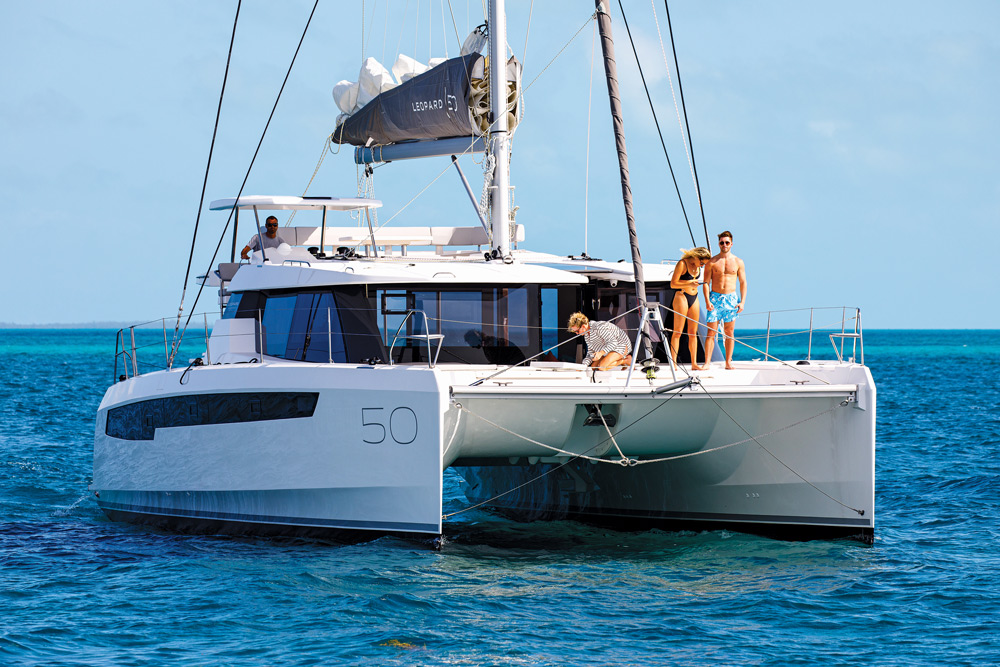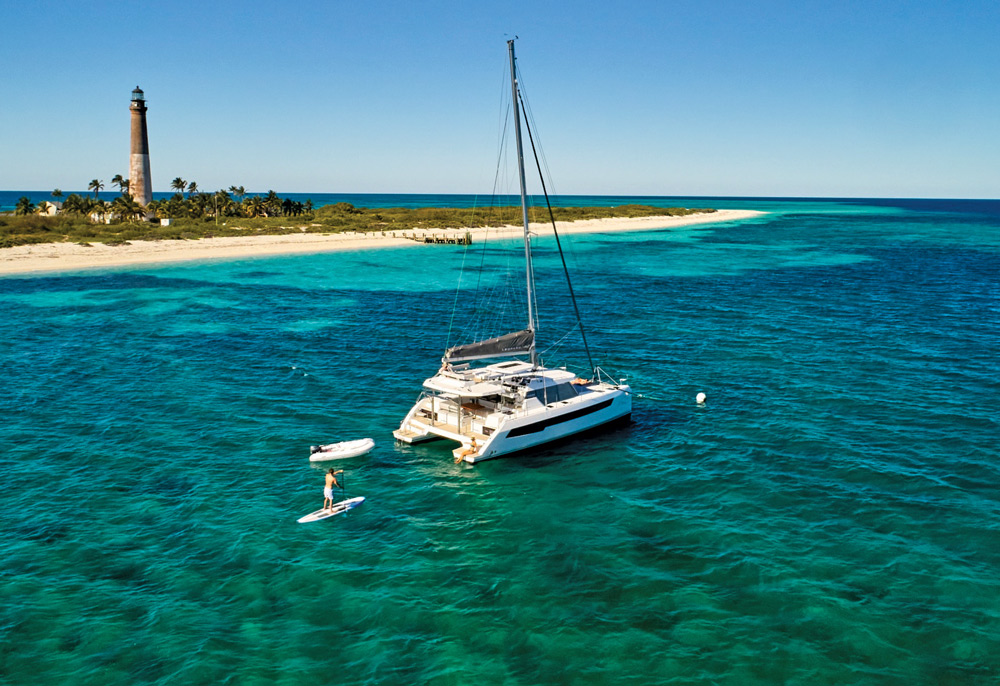Anchoring and mooring a catamaran
Life in an anchorage is great on two hulls so long as you know how to moor the boat
You can’t beat a catamaran for liveability, and no monohull can stand up the comfort provided by a catamaran in a beautiful anchorage. But before you can get to the part where the water toys come out and dinner is served in the cockpit as the sun sets, you have to get the boat anchored or on a mooring. And that can be bit more complicated than it is on a monohull.
Anchoring

The beauty of anchoring with a catamaran, of course, is that the shallow draft means that you can usually head for the front row if you desire, but keep in mind that catamarans tend to swing at anchor much more than monohulls, so you’ll need to scope out a space with a good amount of room.
As with all boats, approach the anchoring spot from downwind, keeping the boat straight into the wind and moving slowly, but with enough power to keep the bows pointed upwind, bringing the boat to as close to a stop as possible as you deploy the anchor.
Aim for about 5-to-1 scope, as measured from the anchor roller to the sea bottom. More scope may be needed in some conditions, but 5-to-1 is typically a good starting place. With the anchor out, set the safety catch on the anchor rode so that the windlass does not carry the load as the anchor catches.
The helmsman then backs straight downwind, using the dual engines to keep the bow pointed into the wind. For sailors unaccustomed to twin engines it can be helpful to imagine the throttles as being the handle of a shopping cart.
When the anchor is secured, it is time to rig up the most important part of a catamaran mooring system: the bridle.

Ideally the bridle will be tied to the bow cleats or attached to padeyes at the bows ready for action before you set the anchor. Once you’ve tested that the anchor is holding, connect the bridle’s shackle or D-ring to a link of anchor rode chain, release the safety catch and let out enough anchor rode that the bridle is carrying the entire load of the anchor. Take up excess slack, replace the safety catch, and your anchor system is set to go.
If you’re in a location where a swim is an option, it’s a good idea to put on a pair of goggles and check the anchor.
Using two anchors
Catamarans are particularly well suited to double-anchor systems because there’s more space to work with two anchors, one off each bow. Double anchors offer increased holding and reduced swing.
Set your first anchor in the usual way, then let out a good amount of additional scope. Drop the second anchor from the opposite hull (or from either hull if the original anchor is set in the middle), then take up the additional scope you let out on the original anchor, paying out the rode on the second anchor. When both anchors are set, hook them both up to the bridle.
You can also anchor Med-style, by setting your main anchor in deeper water then using those handy twin engines to back toward shore. Then use the dinghy to take either a long rope or anchor with a rope rode to shore where you can either put the anchor on the beach or tie to a fixed point.
This system works if you prefer to go bow in as well, but then you should make sure to use your bridle on the aft end of the boat.
Weighing anchor
When it’s time to leave that cozy anchorage, and the helmsman has the engines running, start by removing the bridle. As with any boat, the goal is to slowly power the boat over the anchor, so the person on the bow needs to use their arm or a boat hook to point in the direction of the anchor, giving the helmsman guidance on which way to steer.
The helmsman can once again rely on the throttles to maneuver the boat in the right direction.
As the boat moves forward, use the windlass to take up the slackening anchor rode. Do not use the windlass to pull the boat forward; that’s what the engines are for.
As the boat comes over the anchor, it will often lift off the bottom with the change in angle. If the anchor is well set, the helmsman may need to drive slightly past the anchor to break it free. Once that happens the helmsman should slow the boat and the windlass can finish the job of lifting the anchor. Make sure to set the safety catch once the anchor is fully up.

Comments